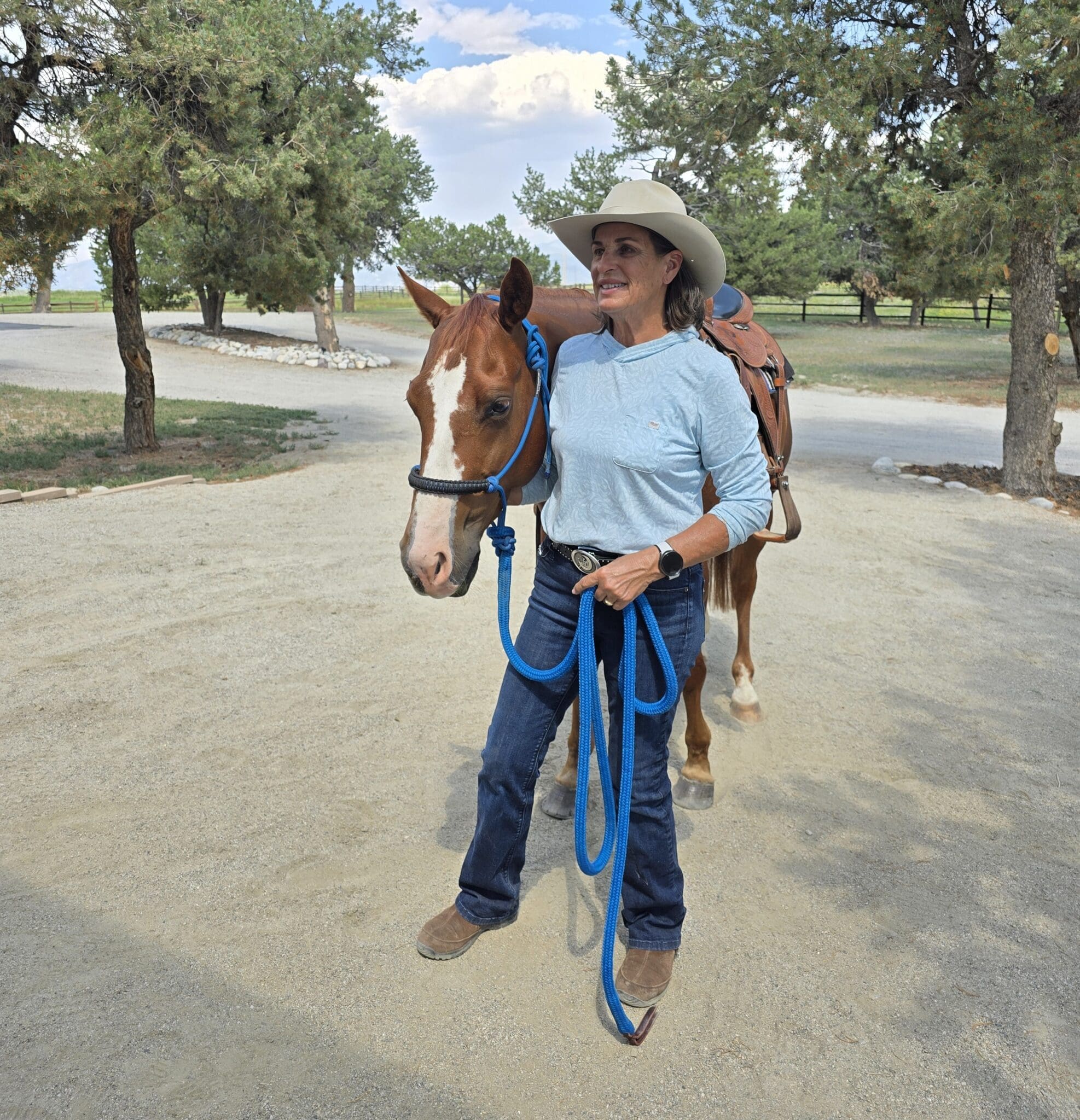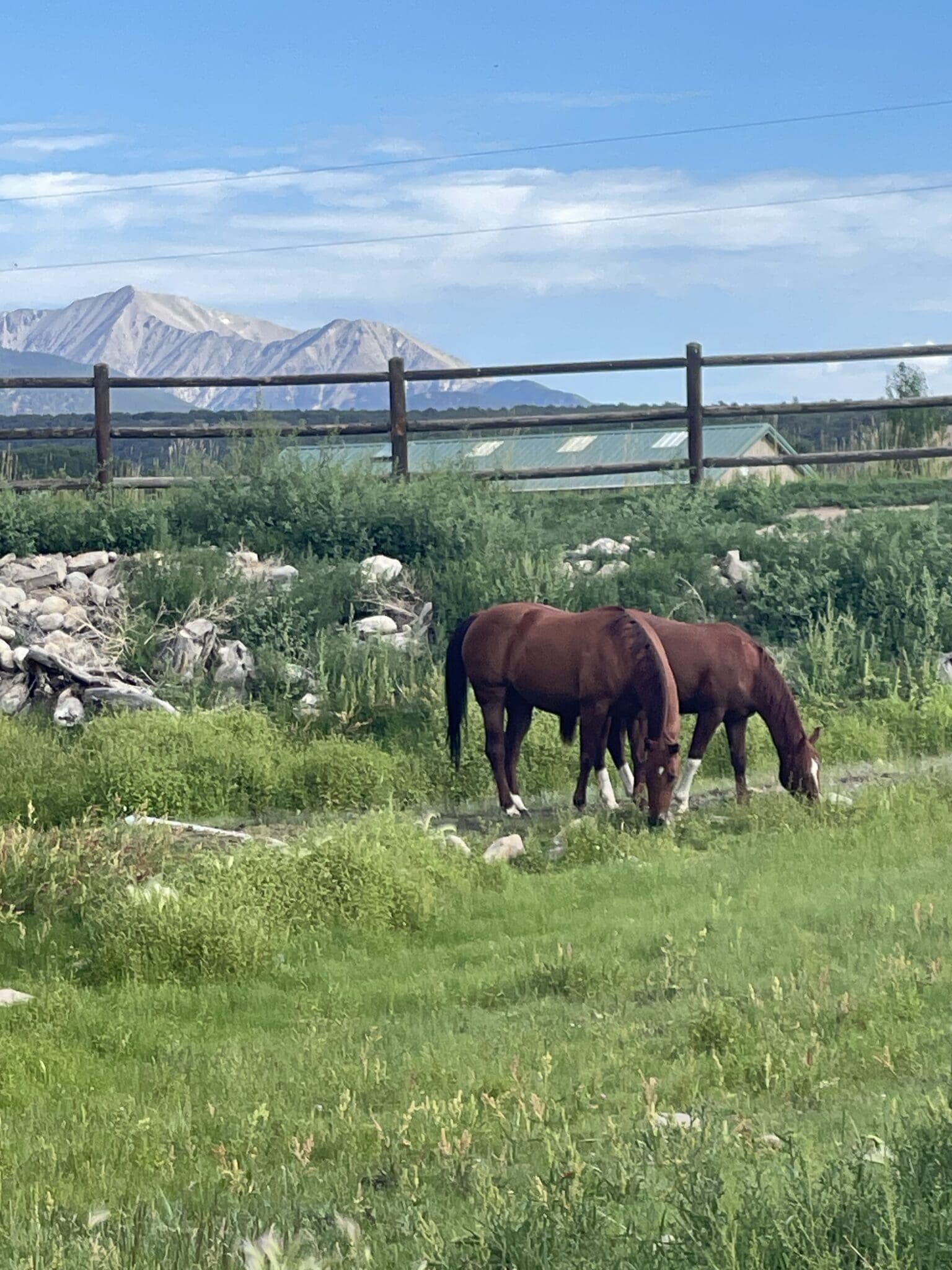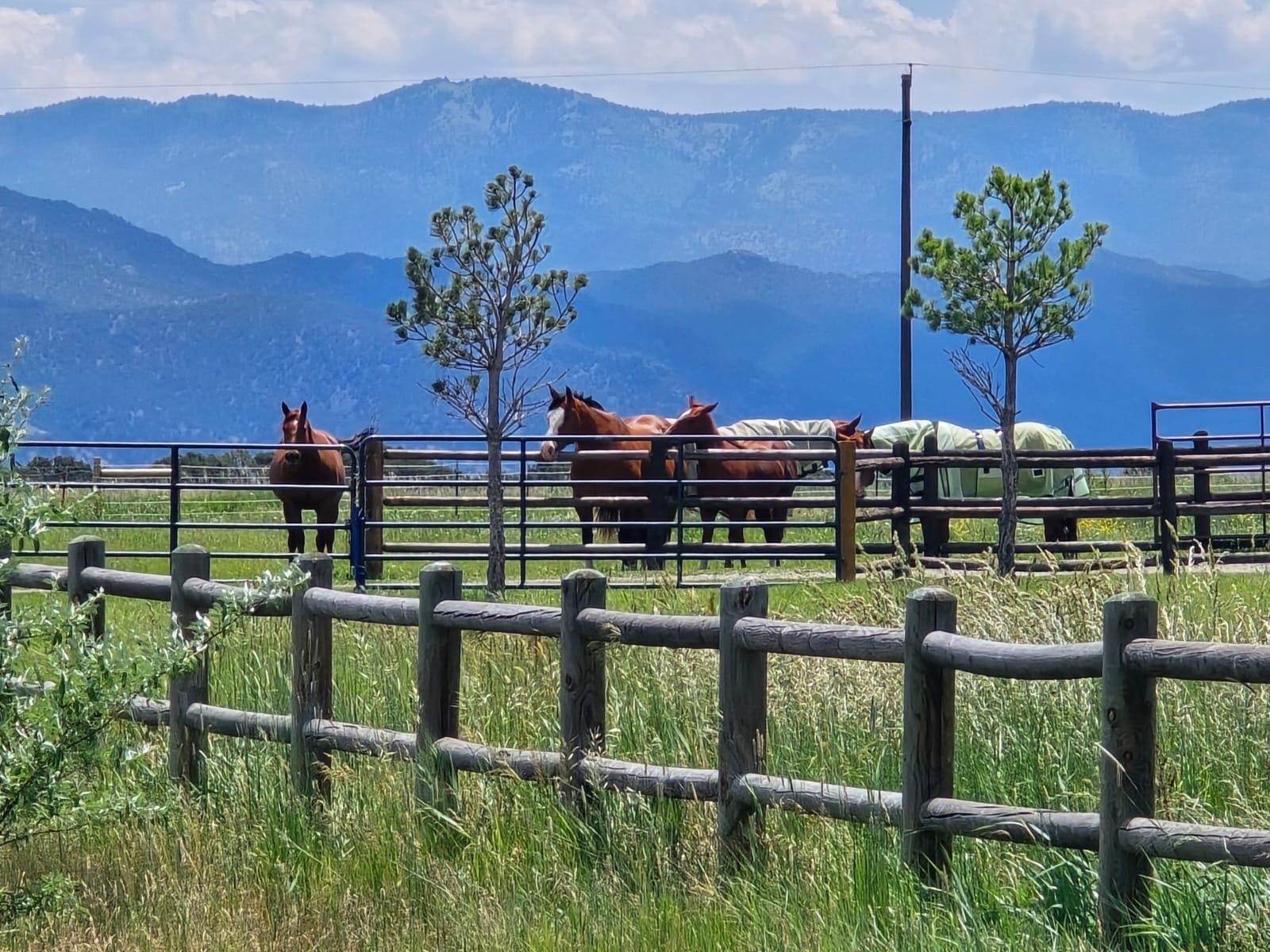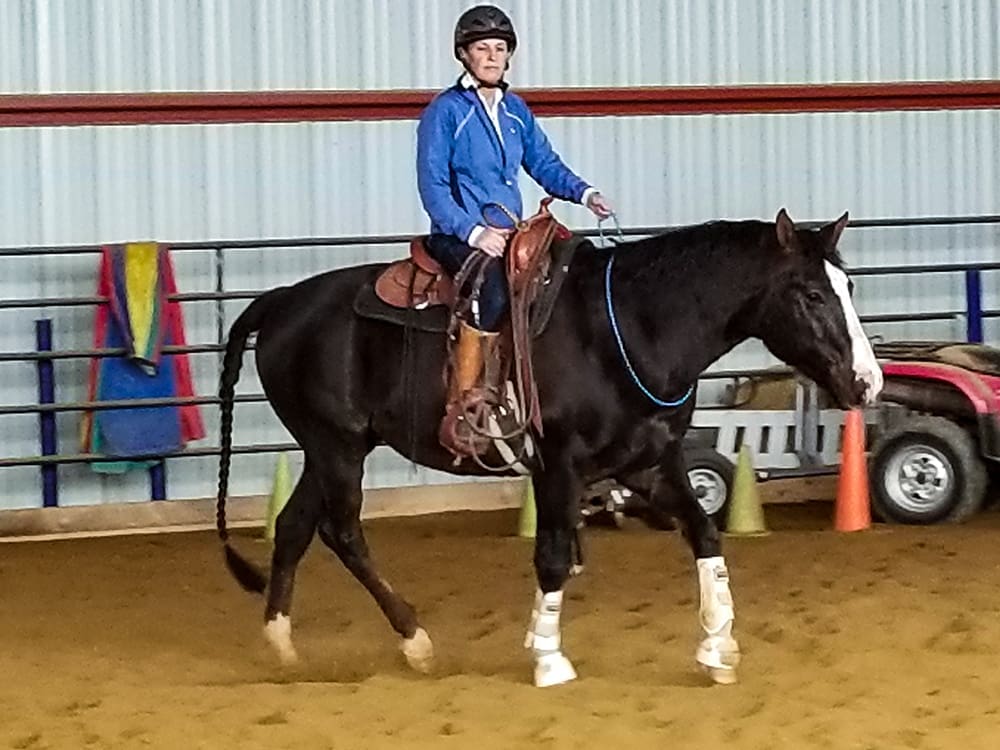It was 6 below zero this morning. Relatively warm by some standards, when you compare it to 25 below, which our neighbors had. That’s why our valley is known as “the Banana Belt of Colorado.”
While we recorded a mere -6° this morning, the valleys to the north, west and south of us all were all in the 25 below range. Now, you may think there is not much difference between 6 below and 25 below, but I’m here to tell you there’s a big diff! While we got well into the 20s today, the South Park (yes, there really is such a place in CO and it is much like the cartoon!), Gunnison and San Luis Valleys were lucky to crack zero.
That’s the difference between being able to work horses or not.
We have all kinds of rules about the weather—from what blankets the horses wear– according to the temperature, to when it is too cold to work them. When it is single digits or below, we don’t work the horses because of the potential for lung-burn. Have you ever experienced it yourself? I have, and it is a serious physical issue that can turn into a respiratory nightmare (a factor of high-altitude, dry, cold air and breathing heavily).
Also, it’s very tricky working horses in ultra-cold weather, especially in a warm indoor arena (ours probably got up to 40° today). If the horses get warm and break a sweat, not only do they have to go back out to the sub-zero temps, but if they are wet, they will NOT dry and will have a serious chill all night.
That’s why we blanket, ironically, to try and keep their hair coats down so we can work them in a warm indoor without a huge amount of body sweat and to keep them warm at night even if they are damp. It’s a complicated scheme.
When the weather is so extreme, you have to be diligent to check the waterers (are the heaters working, are they drinking?), feed extra hay (make sure you have straight grass hay so they can eat all night long), are their feet getting sore from cold and hard ice?
Horses are incredibly adaptable animals and able to adjust to the most extreme environments. That’s how they’ve not only survived but thrived through the millennium. But adjusting them to meet our personal demands (live in a high-altitude mountain environment but still be on a performance horse regimen) sometimes takes some strategy.
Thankfully, tomorrow should be a warmer day, but we still have plenty of sub-zero temps to go this winter. The horses will be waiting for the first rays of sun in the morning, no matter what the temps—standing in the very spot the early morning sun hits first. And I’ll be watching out my window, wishing them warm thoughts.
Enjoy the ride,
Julie



